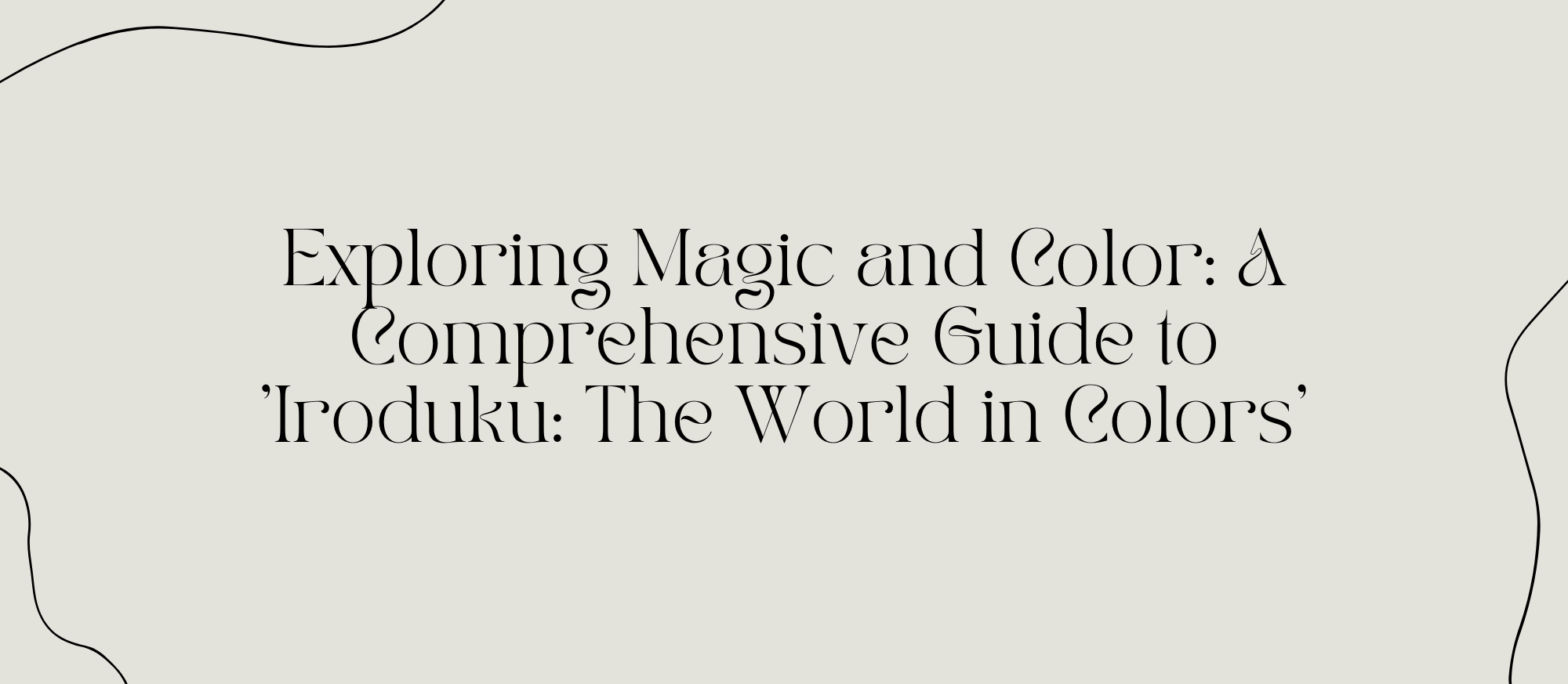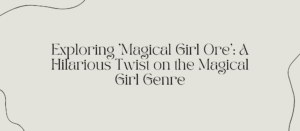Introduction

Embark on a visual and emotional journey with “Iroduku: The World in Colors,” a poignant anime series crafted by the acclaimed Studio P.A.Works. This series delicately interweaves the elements of magic and time travel, presenting a unique narrative that captivates the heart and stimulates the senses.
Set against a backdrop that blends contemporary settings with magical realism, “Iroduku” introduces us to Hitomi Tsukishiro, a 17-year-old witch from a family endowed with magical abilities. Despite her lineage, Hitomi suffers from an unusual predicament—she is colorblind, a metaphorical and literal representation of her emotional disconnection from the world.
The story begins in earnest when Hitomi’s grandmother, Kohaku, sends her back 60 years in time to meet her younger self. This journey is not just through time but also an exploration of self, as Hitomi encounters a world vibrant with colors she has never seen. The narrative explores themes of self-discovery and emotional healing, making it not just a story about a witch but a reflection on the universal quest for connection and understanding.
“Iroduku: The World in Colors” stands out not only for its storytelling but also for its stunning visual execution. The use of color—or the lack thereof—plays a critical role in conveying Hitomi’s internal world and emotional growth. As viewers, we are taken along on her path from monochrome isolation to a life replete with color and connection.
This introduction aims to set the stage for a deeper exploration of Hitomi’s journey and the enchanting world she inhabits, highlighting the creative prowess of Studio P.A.Works in crafting an anime that is both a visual feast and an emotional odyssey.
Plot and Setting

“Iroduku: The World in Colors” weaves a captivating narrative set in a world where the magical and mundane coalesce, illuminated by vibrant strokes of color and emotion. The plot unfolds around Hitomi Tsukishiro, a 17-year-old witch whose world is devoid of color due to her emotional struggles and magical lineage. In a bold attempt to restore her granddaughter’s lost colors, Hitomi’s grandmother, Kohaku, sends her back 60 years in time.
As Hitomi navigates the past, she encounters her teenage grandmother and a group of friends who help her rediscover the world’s beauty. The setting—a lushly depicted 2018 Nagasaki—plays a pivotal role, offering a palette where magic infuses everyday life, turning the mundane into the extraordinary. This era serves not only as a backdrop but as a character in itself, influencing Hitomi’s interactions and growth. The interplay between magic and the everyday is subtly rendered, with scenes that highlight how the simplest moments are transformed by magical realism.
The anime masterfully portrays this blending of timelines and themes, using the vibrant setting of Nagasaki to mirror Hitomi’s evolving inner landscape. As she engages with friends and new experiences, we see a shift not only in her perception of color but also in her understanding of herself and her place in the world. Each episode builds on this transformation, depicting how the past and its vivid hues help Hitomi see her life differently.
This exploration sets the stage for deeper discussions on how our surroundings shape our identities and emotional well-being, making “Iroduku: The World in Colors” a profound narrative about growth, perception, and the magic hidden in everyday life.
Character Analysis

“Iroduku: The World in Colors” intricately portrays the development of its main characters, particularly the protagonist Hitomi Tsukishiro and her grandmother Kohaku. Hitomi, a colorblind witch from the future, is initially depicted as withdrawn and reserved, a teenager who has lost her sense of joy in life. Her journey through time becomes a conduit for profound personal growth. As she interacts with her peers and faces various emotional and magical challenges, Hitomi’s character slowly unfolds, revealing a young woman rediscovering her passion for magic and life.
Kohaku, on the other hand, is shown in her youth as a spirited and ambitious witch, whose actions set the story in motion. Her decision to send Hitomi back in time is driven by a blend of grandmotherly affection and a deep understanding of the magic that runs in their family. Throughout the series, the dynamics between Hitomi and Kohaku are explored not just through their familial bond but also through their shared magical heritage, which weaves through their individual aspirations and challenges.
The interactions between these two central characters, juxtaposed with Hitomi’s relationships with her new friends, are pivotal. The series deftly explores how these relationships impact Hitomi’s emotional growth, helping her to see the world—and herself—in vibrant color again. The evolution of these characters is portrayed with a delicate balance of subtlety and depth, highlighting their individual journeys as well as their influence on one another.
This character analysis offers viewers an engaging look into how personal challenges and relationships interplay within the broader themes of the series, such as self-discovery and the impact of the past on the future. “Iroduku: The World in Colors” excels in showing how characters can not only evolve through their own efforts but also through the insights and challenges provided by those around them.
Themes and Symbolism
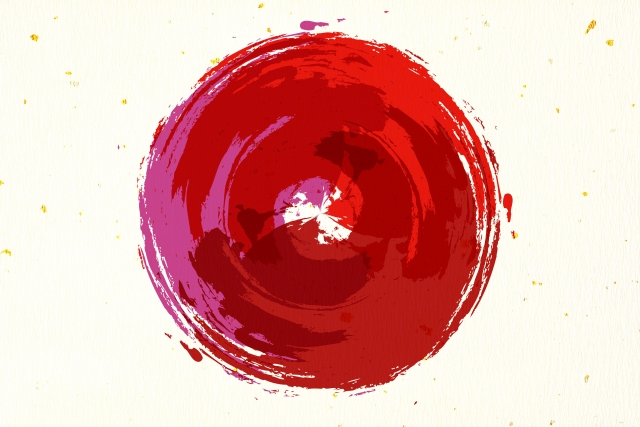
“Iroduku: The World in Colors” offers a profound exploration of perception, depression, and the significant impact that color has on emotions. This anime cleverly uses its premise—where a young witch from the future, who cannot see color, is sent to the past—to delve into how our perceptions shape our reality and emotional state. The protagonist, Hitomi, struggles with depression, feeling disconnected from the world due to her inability to perceive color. Her journey symbolizes the struggle of overcoming personal barriers and rediscovering joy and vibrancy in life.
The use of color in the anime serves as a powerful metaphor for emotional and generational connectivity. Colors in “Iroduku” are not just visual elements but are intricately tied to feelings and memories. As Hitomi begins to see colors, it not only signifies a change in her emotional outlook but also reconnects her with her familial lineage, illustrating the passing down of experiences and emotions from one generation to another. The magic in the series further emphasizes this connection, acting as a bridge between Hitomi and her grandmother, Kohaku, and between Hitomi’s internal world and the external reality.
Through these themes and symbols, “Iroduku” addresses broader discussions about how our senses shape our interactions with the world and with each other. It challenges viewers to consider the role of perception in mental health and personal growth. The series thoughtfully portrays the journey from isolation to integration, making a compelling case for the power of emotional healing and the profound impact of rediscovering one’s senses.
This thoughtful thematic and symbolic examination makes “Iroduku: The World in Colors” a significant contribution to anime, offering a fresh perspective on how everyday elements like color can echo deep emotional truths and connect across time and space.
Cultural Impact and Reception
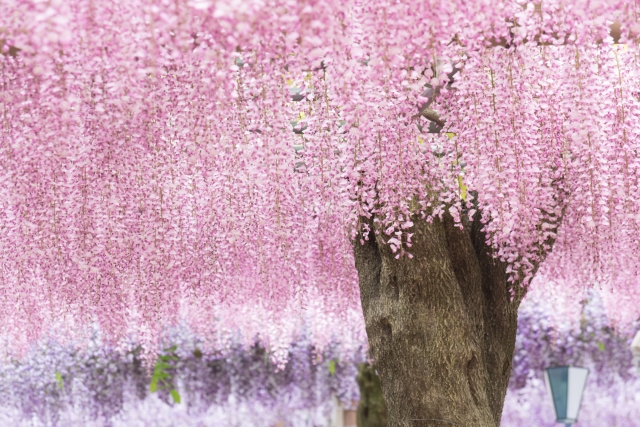
“Iroduku: The World in Colors” has been warmly received by both audiences and critics for its unique take on the magical realism genre within anime. This series stands out for its poignant exploration of how aesthetics and emotion are interwoven, and it has sparked considerable discussion among fans and reviewers alike.
Critics have praised the show for its visually stunning animation and the sensitive portrayal of its protagonist’s journey towards emotional rediscovery. The use of vibrant colors to symbolize the protagonist’s emotional states and growth has been highlighted as a particularly effective narrative device. This artistic choice not only enhances the storytelling but also serves as a metaphor for personal and emotional visibility in a sometimes gray world.
Audience reception has similarly focused on the emotional depth of the series. Viewers have connected with the themes of depression and self-discovery, finding universal resonances in Hitomi’s struggles and triumphs. The show’s ability to blend a compelling emotional narrative with stunning visual representations of magic and color has led to lively discussions online about the role of aesthetics in conveying deeper emotional and philosophical messages.
Moreover, “Iroduku” contributes to broader conversations within the anime community about the potential of animation as a medium to explore complex emotional and existential themes. Its impact extends beyond mere entertainment, challenging viewers to reflect on how they perceive their own worlds and emotional landscapes.
Through its reception and cultural discussions, “Iroduku: The World in Colors” not only captivates with its artistry and story but also invites a deeper appreciation of the intrinsic link between emotion and aesthetics in anime. This approach has not only enriched the genre but also affirmed the series as a significant cultural artifact in contemporary anime discussions.
Conclusion
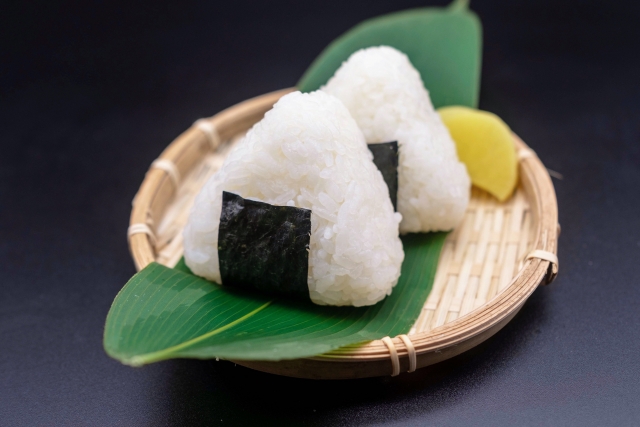
“Iroduku: The World in Colors” stands out as a gem within modern anime culture for its masterful blend of narrative depth and stunning visual storytelling. This series skillfully weaves together themes of perception, emotional rediscovery, and the impacts of color on life, making it a standout example of anime’s potential to explore complex human emotions.
The series is particularly noted for its artistic impact, utilizing vibrant and nuanced color palettes to illustrate the emotional landscapes of its characters. This visual artistry not only enhances the storytelling but also symbolizes the series’ deep exploration of themes such as depression and self-discovery. It’s a vivid representation of how aesthetics can be seamlessly integrated with narrative to enhance emotional expression and thematic depth.
“Iroduku” holds a special place in the anime world, revered not just for its artistic prowess but also for its ability to resonate deeply with viewers. Its approach to handling the nuanced interplay between magic, color, and emotion invites viewers into a richly crafted world that mirrors real-life struggles and triumphs.
For audiences who appreciate detailed storytelling and visual artistry, “Iroduku: The World in Colors” is a must-watch. It offers a unique experience that challenges conventional narrative forms while providing a visually exquisite and emotionally rich journey. Whether you are drawn to sophisticated narratives, stunning animations, or stories that delve deep into human emotions, this series is sure to leave a lasting impact and foster a deeper appreciation for the art of anime.
